
Good morning class.
Sorry about the change in location. Really, that hipster should have known better than to call Professor Fozz “sweetheart”, but what’s done is done. I’m gladdened to hear the remaining victims have been discharged from the hospital and are live-streaming this lecture via AOL Messenger.

Thank God I found all those old CD’s in the garbage on the way here.
Anyway, I’d like to thank the fine folks at Red Truck Brewing for accommodating us on such short notice, especially since we will be taking up a fair deal of their space during our lecture.
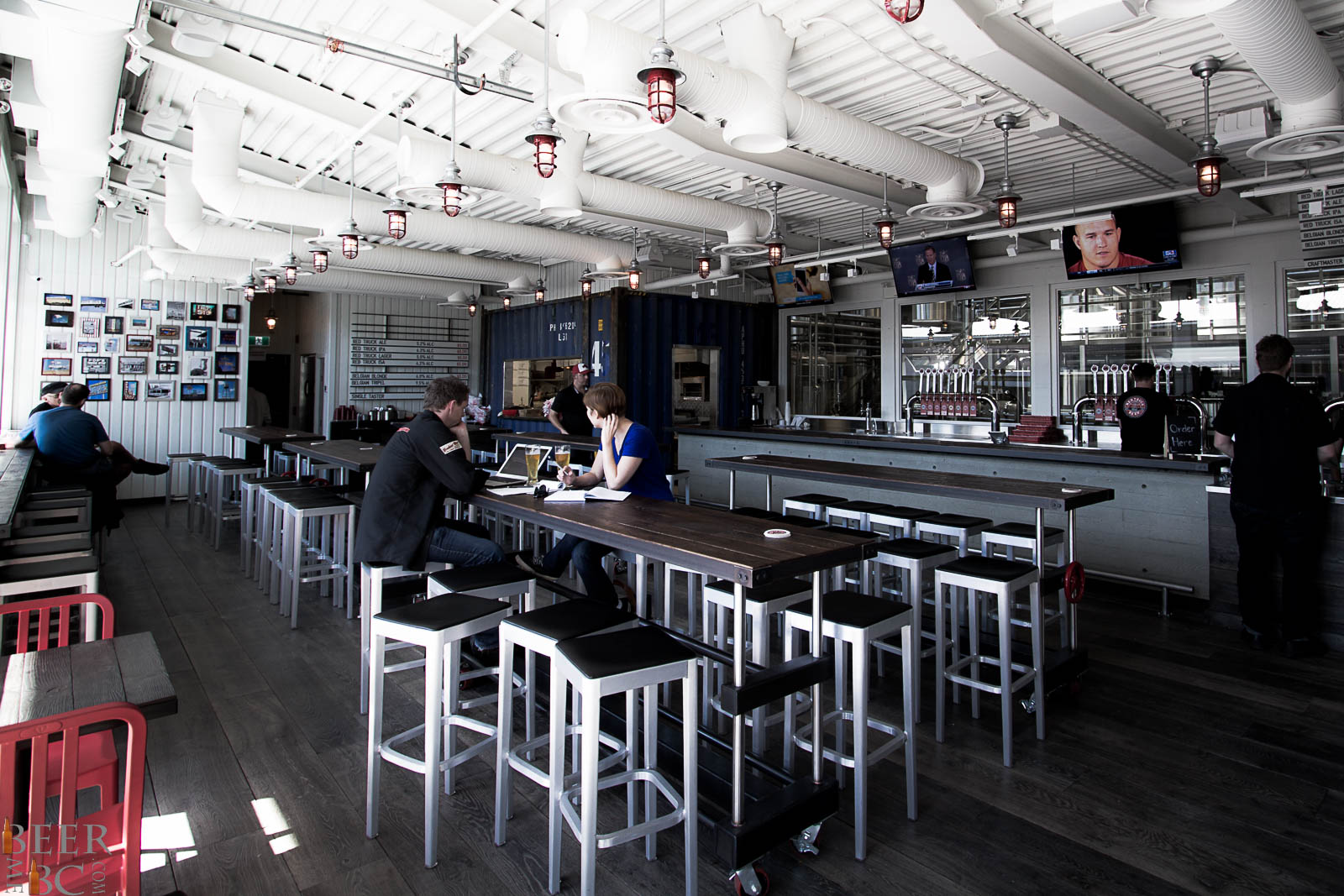
Now, in our last lecture, I broke down the differences between ales & lagers, and we spent our time examining the oft-misunderstood lager side of beer drinking. Rather than repeat the entire opening section, I will just borrow from “Beer for Dummies” and remind you all that
Ale is the beer classification that predates written history. Presumably, the very first beers brewed by our hominid forebears were a crude form of ale spontaneously fermented by wild airborne yeasts. These yeasts became known as top-fermenting yeasts for their propensity to float on top of the beer as it’s fermenting. Hence, ales are, likewise, considered top-fermented beers.
Thus, ales are the older of the two and therefore more varieties exist. Due to the volume of varieties, I will endeavour to give all equal coverage, but instructor preference may result in some getting more explanation than others. For references, here is the chart I will be referring to during the course of the lecture today.

courtesy dummies.com
Now, I will be glossing over a couple of categories via short mentions because space limits the amount of coverage. (You didn’t read every Shakespeare play in college, did you?) However, some will simply be dismissed via pithy remarks, but that’s simply because beers in these categories are usually drunk on dares, and simply exist so connoisseurs/snobs/arrogant fucksticks can have something to turn their nose up at you over. And we all remember what Dr. Fozz did to the last guy who thought that way.

- Pale Ales
Welcome to the category everyone does or should know. Just like 95% of beer drinkers are familiar with “lagers” being the American Light varietal, most casual beer drinkers know Pale Ales as the “ales” they have had in the past. Well, it’s fine to be ignorant, but better to be educated.
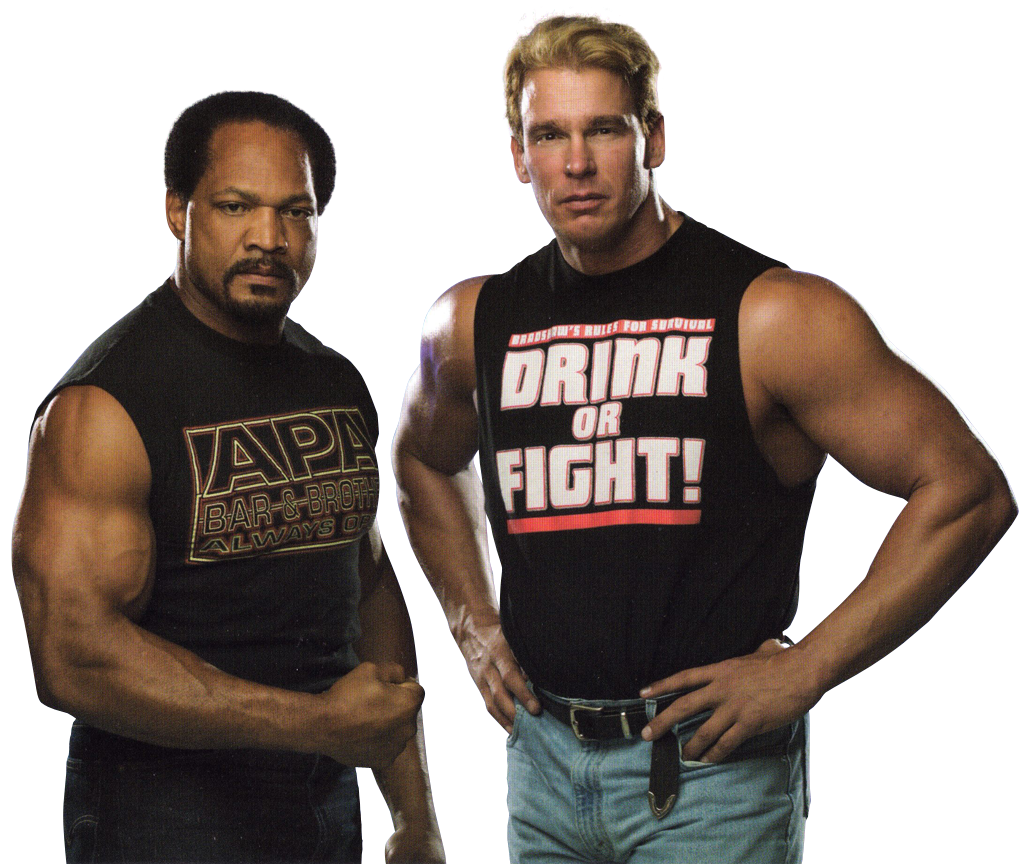
A. American Pale Ale
American Pale Ale, or APA for short, is actually of British origin. It’s popularity comes from the fact that local ingredients make for easily discernible regional taste variations. According to Beer Advocate, the American versions tend to be cleaner and hoppier, while British tend to be more malty, buttery, aromatic and balanced. It’s the type of beer that, due to fermenting them at fairly warm temperatures (55 to 70 degrees Fahrenheit, 12 to 21 degrees Celsius), the fermentation process is usually completed in about a week or so.
Further, the alkalinity of the water can also play a role in drawing out flavours in the ale’s ingredients. Just as Coors advertises that “it’s the water”, many APAs could also rightly claim that their particular water source lends a unique flavour to their ales.
 Beer Advocate lists over 14,000 different brands of APA on their website, with Sierra Nevada being the biggest, most popular name on their page. Your Goose Islands, Deschutes & Lagunitas’ also live in this range.
Beer Advocate lists over 14,000 different brands of APA on their website, with Sierra Nevada being the biggest, most popular name on their page. Your Goose Islands, Deschutes & Lagunitas’ also live in this range.
Really, each city should have 1-2 pale ales that represent it. My advice is to go out & try what brewers think your town should taste like.

————————————
B. India Pale Ale (IPAs) & Double/Imperial IPAs
Because this sub-category is populated by a resident (male) population of hop-humping shitheads, I’m going to take some time with this category, just so it can be somewhat fully explained while avoiding driving you mad with rage.
Before getting technical, Chowhound repeats the most popular theory is that IPA was created to survive the tough, months-long trip from Britain to India through tropical weather with no refrigeration. “They upped the hops and [alcohol by volume in pale ale], and the beer not only made the voyage, but the troops loved it,” says Julia Herz, the craft beer program director at the Brewers Association in Boulder, Colorado.
To withstand the voyage, IPA’s were basically tweaked Pale Ales that were, in comparison, much more malty, boasted a higher alcohol content and were well-hopped, as hops are a natural preservative.
The first IPA came from George Hodgson’s Bow brewery in Lea, a few miles upriver from the British East India Company’s (EIC) head office in east London. As he was in with the EIC executives, he was soon able to command a monopoly on the trade as the East India Company made all its profit on the return trip, when its clippers rode low in the water, holds weighed with skeins of Chinese silk and sacks of cloves.
However, Hodgson got greedy – he began changing the terms of his credit (formerly 18-months payment due); he began using his own ships; he began selling to other shipping companies. This led the EIC to pursue other suppliers; since the process for creating the ale wasn’t patented, they could work with another brewer to create a similar product at rates more favourable to the East India Company.
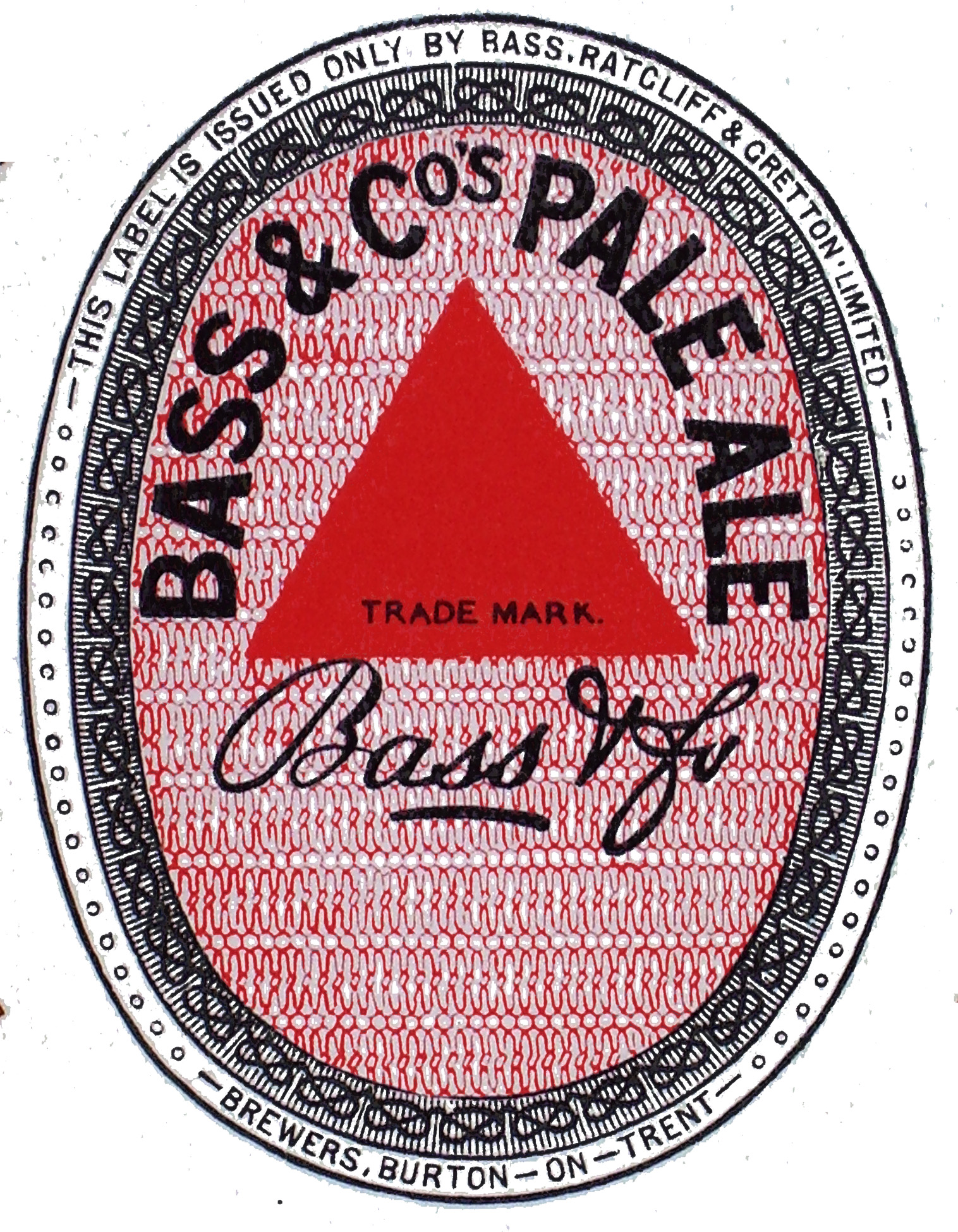 In 1822 Campbell Marjoribanks, one of the EIC’s directors, sat down to dinner with Samuel Allsop, a brewer from Burton-on-Trent, hoping to clip Hodgson’s wings. After their dinner, Marjoribanks poured the brewer a glass of Hodgson’s ale, promising him a fortune if he could brew something similar. He could, and did, and soon made Burton the centre of Britain’s IPA industry. Of the competing IPA brands that came up through Burton, the most famous would become Bass. Bass’s pale ale (in style, an IPA) made it Britain’s biggest brewery and its red triangle logo appeared round the world—some call it the first global brand. Soon, IPA production spanned the globe.
In 1822 Campbell Marjoribanks, one of the EIC’s directors, sat down to dinner with Samuel Allsop, a brewer from Burton-on-Trent, hoping to clip Hodgson’s wings. After their dinner, Marjoribanks poured the brewer a glass of Hodgson’s ale, promising him a fortune if he could brew something similar. He could, and did, and soon made Burton the centre of Britain’s IPA industry. Of the competing IPA brands that came up through Burton, the most famous would become Bass. Bass’s pale ale (in style, an IPA) made it Britain’s biggest brewery and its red triangle logo appeared round the world—some call it the first global brand. Soon, IPA production spanned the globe.

As failure inevitably follows success, IPAs eventually fell out of favour due to a number of factors:
- the widespread availability of tonic water (or “Indian tonic water”) in 1858
- which contained quinine, which helped prevent malaria, and mixed nicely with gin.
- The Gin & Tonic originated in India and was exported back to Britain.
- which will be covered in Alcohol 300
- The Gin & Tonic originated in India and was exported back to Britain.
- which contained quinine, which helped prevent malaria, and mixed nicely with gin.
- high taxation in Britain, introduced by Gladstone in 1870, which based rates on the ABV percentage in beer.
- Forcing brewers to change their formulations to bring the ABV levels down from 8-10% to under 5%
- Leading some people to switch to harder alcohols that required less liquid intake to achieve the state they were looking for.
- Forcing brewers to change their formulations to bring the ABV levels down from 8-10% to under 5%
- the invention of industrial refrigeration, which allowed export of German lager & Czech pilsners
- grain shortages during the wars
- Prohibition movements
Although these factors effectively killed the major brewers of IPA in Britain, it is still widely available via smaller producers. Bass was sold to InBev in 2000, but is still brewed under contract in Burton by Marston’s Brewery. The tax law which hampered the industry for years still ensures that almost all British IPAs are under 5% ABV, but they still range between 40-60 IBU (International Bitterness Units).
 To make a long story short, the style was essentially revived in America by Fritz Maytag & Anchor Brewing in 1971. Maytag bought Anchor in 1965 and was looking to develop an English-style ale. He used a new Oregon-grown variety of hops called Cascade, which was developed by the USDA breeding program at Oregon State University and released in 1971. He released his ale, called “Liberty Ale” to commemorate the 200th anniversary of Paul Revere’s ride, in 1975. Five years later, Sierra Nevada developed their own IPA, beginning a trend.
To make a long story short, the style was essentially revived in America by Fritz Maytag & Anchor Brewing in 1971. Maytag bought Anchor in 1965 and was looking to develop an English-style ale. He used a new Oregon-grown variety of hops called Cascade, which was developed by the USDA breeding program at Oregon State University and released in 1971. He released his ale, called “Liberty Ale” to commemorate the 200th anniversary of Paul Revere’s ride, in 1975. Five years later, Sierra Nevada developed their own IPA, beginning a trend.
Blowing the doors open was Bert Grant, a former consultant to Stroh’s & Busch and a former hops marketer, who was reputed to carry a vial of hop oil, and to add it to glasses of Bud, Miller or Coors when they were the only brews available. He lobbied Washington state for clarification to their alcohol licencing statutes, which he successfully argued allowed a brewer to operate one pub related to the production facility.  He used that victory to start the Yakima Brewing & Malting Company in 1982, the first new US brewery since Prohibition – which gave birth to the rise of the microbrewery. His IPA – thought by some to actually be the first “American IPA” of the new revolution – was 60 IBU and led other home brewers to simulate his success and start their own breweries off their own formulations. Most American IPAs range between 40-70 IBU.
He used that victory to start the Yakima Brewing & Malting Company in 1982, the first new US brewery since Prohibition – which gave birth to the rise of the microbrewery. His IPA – thought by some to actually be the first “American IPA” of the new revolution – was 60 IBU and led other home brewers to simulate his success and start their own breweries off their own formulations. Most American IPAs range between 40-70 IBU.
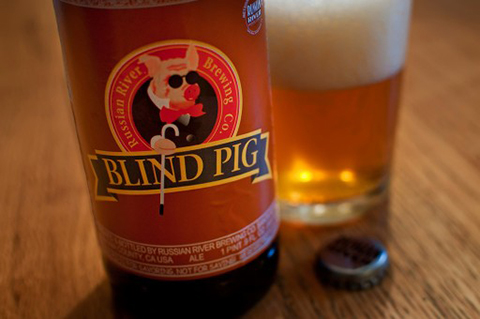 This independence & reliance on creating their own formulas is what led to what some have called the craft brewing “Hops Arms Race – ‘It became almost like a chili-eating contest—somebody came out with 75 IBU, and another brewer came out with 85 IBU, and so on.’” This is what has led to the evolution of the IPA into areas like the “Double IPA” or “Imperial IPA”. Pioneering this effort was Vinnie Cilurzo who, in 1994, started Blind Pig Brewing in Temecula, CA and brewed Blind Pig Inaugural Ale, which came in at 120 IBU, marking the birth of the Double IPA. They routinely produce, in small batches, Double IPAs that come in at 90 IBU and higher.
This independence & reliance on creating their own formulas is what led to what some have called the craft brewing “Hops Arms Race – ‘It became almost like a chili-eating contest—somebody came out with 75 IBU, and another brewer came out with 85 IBU, and so on.’” This is what has led to the evolution of the IPA into areas like the “Double IPA” or “Imperial IPA”. Pioneering this effort was Vinnie Cilurzo who, in 1994, started Blind Pig Brewing in Temecula, CA and brewed Blind Pig Inaugural Ale, which came in at 120 IBU, marking the birth of the Double IPA. They routinely produce, in small batches, Double IPAs that come in at 90 IBU and higher.
[To clarify, “Imperial” comes from Imperial Russian stout, which was brewed in England in the 1700s for export to Russia’s imperial court, and serves as today’s foundation for “double hopped” ales, which are epitomized by a hoppy, high-alcohol content.]
It is the IPA & Double IPA that have led to the backlashes against craft brewing from time to time. I’ll admit that the last 10 years of over-hopping ales is what’s driven me back to lagers & pilsners. Making a product designed to drive away customers sure seems like a formula for bankruptcy, but maybe I’m not a “true believer” because I got old & don’t want drinking to be a challenge for my palate. Brett Favre’s Colonoscopy helpfully provided a link in the last lecture to the most recent salvo in this ongoing war – Craft Beer’s Post-Snob Era Is Here. I recommend reading it. While I’m not about to jump on the #UpForAnything train, if the backstory of an IPA sounds like Chapter 4 of “Ulysses” I’m out.
————————————
C. Bitter Beers
i. Ordinary
- The Bitter style came from brewers who wanted to differentiate these ales from other mild brews, enter pale malts and more hops. Most are gold to copper in colour and are light bodied. They have low carbonation.
- The alcohol content is low, between 3.0-4.0% ABV.
- The kick comes from the amount of hops used to make the beer bitter. Because of the low carbonation, most Bitter beers can range between 20-35 IBU to achieve their flavour profile.
- The yeast used for fermentation leaves behind some fruity aromas and perhaps a touch of the butterscotch-like flavor compound called diacetyl.
- The alcohol content is low, between 3.0-4.0% ABV.
ii. Special/Best Bitter
- A Bitter that ranges from 4.2-4.7% ABV while maintaining a low IBU profile.
- Essentially, if you fuck up a batch, this is what you label it for sale.
iii. Extra Special Bitter (ESB)
- ESBs are essentially more aggressive and more balanced Bitters, both in alcohol and hop character, but nothing overpowering. Red Hook is one of the American standards
- It will range between 30-50 IBU, and start at 4.8% ABV and top off at about 6.0%.
- The colour range will be similar to an ordinary bitter, though leaning towards the darker end of the scale – dark golds to copper.
- We happen to have a very fine version of an ESB in Vancouver, made by Central City out of Surrey, BC & also served at their downtown Vancouver location on Beatty Street.

2. Amber / Red Ales
Essentially a catch-all category for any beer less than a Dark Ale in color, ranging from amber to deep red hues. The emphasis is on the malt, because it is the colour the brewer is looking for, not the hoppy ‘kick’. However, a brewer can choose to emphasize a hoppy characteristic so long as they get the colour right first.
Most brewers have a year-round availability, since not everyone wants to go down the pale ale road in mid-summer, but they want to avoid the down-the-nose look their snooty friends might give them if they order a lager. Most micros will have a version of this as well, although some still reserve their brands for fall release.

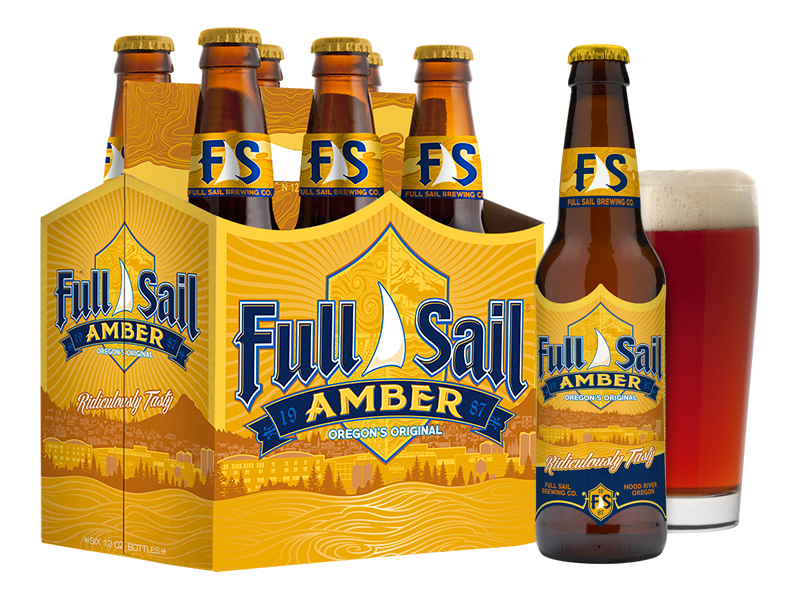
3. Brown Ales
Now we’re cooking with gas!
As Beer Advocate puts it, Brown Ales tend to be maltier and sweeter on the palate, with a fuller body. Color can range from reddish brown to dark brown. All seem to have a low hop aroma and bitterness.
You know the standard,

but there are many fine versions of this product available on the market. Flavour variations lean towards either a fruity taste or a nutty taste, as epitomized by the numerous “nut brown” ales that populate this category.
The American Brown Ale is just like the English version, but is characterized by more North American ingredients, like coffee or pecans. Sam Adams makes a Hazel Brown beer, but my particular favourites (of the places I’ve visited) are Big Sky Brewing‘s Moose Drool Brown Ale,

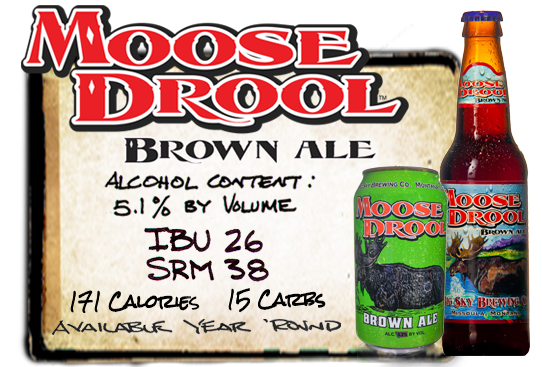
and Tommyknocker Brewery‘s Maple Nut Brown Ale.


4. Stouts
You know what they are. Stouts are those dark brown to black beers people seem to willingly order whenever you are in a British or Irish establishment, sometimes with an “Well, since I’m in a (WISE) pub, I think I’ll have…” rationalization.
A common standard of Stouts is the use of roasted barley (unmalted barley that is kilned to the point of being charred) which lends a dry character to the beer as well as a huge roasted flavor that can range from burnt to coffee to chocolate.
As the chart betrays, there are five standard variations on “stout”:
- Dry (Or “Irish Dry”)

- You know it without me having to address it. The big three are Murphy’s, Beamish, and Guinness.
- American-style dry stouts are stylized with the typical affection for American hops, including heavy aromatic additions, and fermented with neutral American ale yeast.
- George Killian’s Irish Stout is the widest available macro in this range. I’ve had Harpoon’s Boston Irish Stout, and would consider it comparable to Murphy’s.


- Sweet (or Milk)
- A sweet stout is made via the addition of lactic sugar (lactose) to the fermentation process. It adds additional sweetness to the body of the beer.
- While it’s not enough to trigger a diabetic coma, people with sensitivities should be wary.
- Sam Adams makes a nationally available version.
- But any brewery that makes a “Milk”-labeled version is doing the same thing.
- A sweet stout is made via the addition of lactic sugar (lactose) to the fermentation process. It adds additional sweetness to the body of the beer.
- Oatmeal

- It’s a stout like all the others, only oats have been added to the mash to provide a different form of light sweetness to the brew.
- The oatmeal also takes the edge off the malt, making it probably the easiest to drink of the sipping stouts.
- Goose Island has you covered, but there are a lot of west coast brewers who make a version of this as well.
- But they can be a bit hoppy, given the Portland-effect.
- It’s a stout like all the others, only oats have been added to the mash to provide a different form of light sweetness to the brew.
- Foreign
- Borrowing once again, Foreign (or “Export”) special style of stout that is brewed bigger than normal for a long journey, the more traditional Foreign Stouts will be found in the tropical regions of the world.
- Higher in alcohol with a very pronounced roasted character.
- Guinness makes at least three varieties of the Foreign stout, but my favourite description of a Foreign stout comes from Ceylon / Lion Brewing out of Sri Lanka:
- Symbolic black to denote leadership, power, focus and strength, is dominant in the labeling as the lion journeys in the twilight unafraid, unbowed and unchallenged.
- Its can kicks ass.
- Symbolic black to denote leadership, power, focus and strength, is dominant in the labeling as the lion journeys in the twilight unafraid, unbowed and unchallenged.
- Borrowing once again, Foreign (or “Export”) special style of stout that is brewed bigger than normal for a long journey, the more traditional Foreign Stouts will be found in the tropical regions of the world.


- Russian Imperial
- This contains the trifecta of stout characteristics:
- High alcohol content – 8-12% ABV is standard, although some brewers go as high as 15%.
- A powerful malt flavour – almost a roasted, dry taste.
- Sometimes with hints of other alcohols, depending on if it’s been cask-aged.
- Low carbonation, for easy drinking.
- It is not a beginner’s beer, nor is it a random selection on a night out.
- Choosing to drink this implies an ulterior motive behind the need to order this beer.
- Usually a dare or the need to forget.
- Choosing to drink this implies an ulterior motive behind the need to order this beer.
- This contains the trifecta of stout characteristics:
5. Porters
Porters are the blended whisky of the ale spectrum, since the traditional English kind was a blend of three different styles of ale:
- an old ale (stale or soured),
- a new ale (brown or pale ale), and
- a weak one (mild ale),
with various combinations of blending and staleness, based upon the whims of availability and/or the brewmaster. This new beer could be served immediately because it didn’t need to be aged at the pub, and the “Three Threads” that comprised a porter meant it could be (re)produced rapidly and produced on a large scale.
The American style ramps up the English version with the addition of additional hops, or spending some quality alone-time in a bourbon or whiskey barrel to coax out additional flavour notes.
Both Guinness & Sam Adams make a couple of variations on a porter, but my preference is for Great Lakes Brewing’s Edmund Fitzgerald Porter


which has a delightful complexity, and is one taste in the mouth and another going down the throat.
Also, it’s a hell of an excuse to crack a bottle & turn on the Gordon Lightfoot.
6. Strong Ales
The two kinds – English & American – should seem similar, but really they diverge on what “strong” should mean.
- The English version goes for style over substance. It aims for an ABV of between 7-11%, trying to land in the area between a red ale and a barleywine. In stronger versions, the bottle conditioning can give rise to an alcoholic taste that hints at a solvent.

- The American version aims for substance, with an ABV that can range all the way up to the 29% found in the Samuel Adams Utopias porter.
From there, you can move on to barleywines. Like Strong Ales, English varieties are quite different from the American efforts, what sets them apart is usually the American versions are insanely hopped to make for a more bitter and hop flavored brew, typically using American high alpha oil hops. English version tend to be more rounded and balanced between malt and hops, with a slightly lower alcohol content, though this is not always the case.
Most Barleywines can be cellared for years and typically age like wine. This is beer snobbery at its height. Someone offering you this was too scared to order Rohypnol through the mail, and you will likely wake up with a scar where your kidney used to be. Strong style is an acquired taste, so tread carefully the first time you encounter it.

Quite frankly, strong ales of both varieties are lost on me now that I’m older. As I recall, they didn’t do much for me back in the day either, simply because a 17% beer wasn’t as much fun to drink as a double CC & Schweppes.
Of all the limited varieties, the only Scottish ale you should try is Innis & Gunn, because – outside of their traditional porter – they store their ales in various casks, like rum or scotch in order to create unique flavours that don’t taste like a chore to enjoy.
7. Belgian Ales
To borrow liberally from Dageraad Brewing‘s description of Belgian ales, the BJCP (an American beer judge certification program) has described thirteen styles of Belgian beer. About half of the beers brewed in Belgium defy categorization completely, falling into that fourteenth catch-all category, “Belgian Specialty Ale”.
Historically, Belgians weren’t constrained by tradition or by law the way many British and German brewers were. Belgium never had an equivalent to the celebrated German reinheitsgebot, the purity law that restricted brewers to brewing with nothing but barley, hops, water, and yeast. If Belgian brewers wanted to use oats or wheat in addition to barley, they were free to do so – and for that matter, they could also add carmelized sugar and a big bucket full of coriander or aniseed or thyme if they felt like it.
In short, most Belgian beers (outside Stella) are primarily ales with a heavy emphasis on malts and a lot of fruity yeast flavors.
- The Belgian-style blonde ale is typically easy-drinking, with a low but pleasing hop bitterness. This is a light- to medium-bodied ale, with a low malt aroma that has a spiced and sometimes fruity-ester character. Sugar is sometimes added to lighten the perceived body and cut down on bitterness.
- The Saison (or Farmhouse) Ale is bottle conditioned, and thus may have a high yeast or carbonation level, depending upon the fermentation time. The style has become more popular in the US, because the bottle conditioning allows the smallest of brewers to produce product for sale, since large kegs are not required.
- Bière de Garde (“beer for keeping”), according to the brewmasters at Wikipedia – because all other sites were so arrogant I wanted to punch my computer – is a strong pale ale or keeping beer traditionally brewed in the Nord-Pas-de-Calais region of France and southwestern Belgium. These beers were originally brewed in farmhouses during the winter and spring, to avoid unpredictable problems with the yeast during the summertime.
8. Other Belgian Ales
This is where your Trappist/Abbey and Sour beers live.
The Trappist Dubbels, Tripels & Quadrupels are the types beloved by the average beer hipster, with their complex malts & unique added sugars, each possessing an increasing amount of ABV the higher up the scale you get. PK’s favourite brand – Allagash – makes a good number of Trappist-inspired beers among the 25 Belgian beers they make in total.
The sour beers – the Flanders varietals – are produced using a bacteria that converts sugars inside the mixture during secondary fermentation, which in these beers takes place during their storage, which can last up to two years. The resulting acetic acid is, when properly balanced, what gives the beer its slightly sour taste. Also, like porters, old & new batches are mixed together prior to bottle conditioning, to create unique flavour profiles.
Much like cocaine and 2:00AM hookups, you don’t find these on your own – someone introduces you to them, and then you decide whether you like it or not.
9. Wheat beers
To paraphrase from The Spruce, to be considered a wheat beer a significant quantity of the mash should contain wheat. Wheat beers typically contain 30-70% wheat malt. The remainder is regular barley malt, usually a pale variety like Pilsner. And though there are many different styles and sub-styles that can be called wheat beers, they all share certain characteristics:
- Wheat has a lot more protein in it than barley which contributes to thick, long lasting heads.
- This protein also creates a haze in most wheat beers.
- Wheat contributes very little flavor to a beer but it does contribute a distinctively silky mouthfeel.
- Wheat beers are highly effervescent and most are light in flavor, making them great summer beers.
A. Hefeweizen
The best-known and original wheat beer is Hefeweizen, which originates in southern Germany. Using wheat as an ingredient in beer was the first exception made to the famous beer purity law, Rheinheitsgebot. That exception was made specifically so the nobility could continue to enjoy this style.
 A hefeweizen is pale and cloudy. It is bottled and served unfiltered so the yeast used during fermentation is still present. [FYI – “hefe” means “with yeast” in German.] This special strain of yeast contributes banana and clove notes to the aroma and flavour of the beer. Americans were the ones who popularized the lemon wedge served with a hefeweizen; the origins are unclear, but the thinking is that it was done to help reduce the yeasty taste. The downside is that it might help improve the taste, but it quickly eliminates the head.
A hefeweizen is pale and cloudy. It is bottled and served unfiltered so the yeast used during fermentation is still present. [FYI – “hefe” means “with yeast” in German.] This special strain of yeast contributes banana and clove notes to the aroma and flavour of the beer. Americans were the ones who popularized the lemon wedge served with a hefeweizen; the origins are unclear, but the thinking is that it was done to help reduce the yeasty taste. The downside is that it might help improve the taste, but it quickly eliminates the head.
Contrary to popular opinion, hefeweizens are not an acquired taste, and are easily enjoyed by lager & ale fans alike.
————————————
B. Dunkelweizen
Essentially, it’s a hefeweizen but brewed with dark or roasted malts, thus producing a darker colour. Additionally, the darker malt is said to enhance the banana flavour of the yeast, giving the beer a banana bread taste.
————————————
C. American Wheat Ale
It’s brewed exactly the same way as a hefeweizen, but using a North American yeast, which is more neutral than the European variety & thus doesn’t produce the same banana & clove notes as the German original. To augment their hefeweizen, most American producers will supplement with additional hops.
The American Dark Wheat Ale is cousin to the Dunkelweizen.
————————————
D. Berliner Weissbier
Brewed in northern Germany, Berliner Weisse is fermented with ale yeast and the bacteria Lactobacillus delbruckii, which contributes a dominant mouth-puckering sourness to the taste of the beer, leading people to add flavoured syrups to improve the taste.
At this point, I’m out. It’s one thing to add sugar to iced tea, but having to flavour a beer just crosses a line.
————————————
E. Witbier
A Belgian hefeweizen, made with wheat & oats. It’s often referred to as a “white beer” due to the amount of particulate in suspension. It’s a more popular beer in the US than hefeweizen, likely due to regional variations that can be incorporated into a Belgian ale versus a German.
Hoegaarden is the original, but Blue Moon, Shock Top & Allagash White are the popular favourites. Although, I have a soft spot for Kronenbourg 1664 Blanc.



10. Spontaneously Fermented Beers
Lambic, Fruit lambic & Gueuze are all Belgian beers that are aged at some point during their production. The difference between the two lambic beers is that the fruit version comes about when whole fruits are thrown into the fermentation once the yeast has started its process. These notes offset the tartness of a regular lambic, but both beers are aged in casks to ensure the tartness of the fermentation process has subsided.
A Gueuze is a blend of old & new lambics, which are blended & bottled, and then stored for 2-3 years in order to intensify the lambic flavours. What it primarily does is create a sour beer, as the in-bottle fermentation that takes place produces small amounts of acetic acid, which results in the sour taste to the beer.
11. Specialty Ales
Much like with lagers, this style takes on the flavour of whatever holiday concoction the brewmaster is shooting for. This is anything from the common spiced Fall Pumpkin beer to Christmas beers with nutmeg and cinnamon to ginger beers to heather ales. Some brewers will throw just about anything into the brew kettle; hot peppers, fruits & vegetables, hemp, ginseng or spruce needles. Keep you mind open when you are trying some as brewers will always keep on trying to expand the limits of what beer is.
Meal pairings:
In our lager lecture, I used a bacon cheeseburger as the dividing line for what to enjoy with that type of beer. For ales, I tend to use a steak.
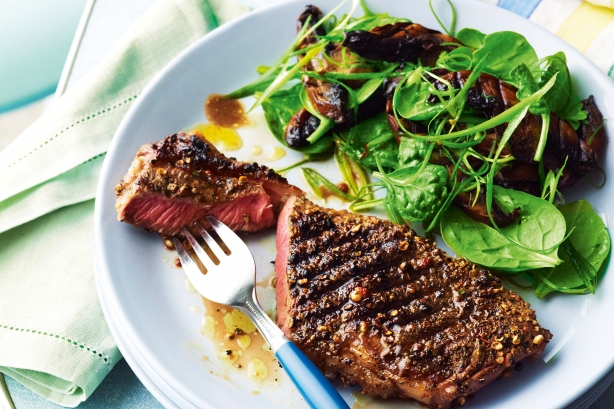
A good steak can be enjoyed with any kind of ale. From here, the choice is up to the drinker:
- For lighter beef/meat fare, like ribs, pork chops or a hot dog, I prefer lighter ales, like a hefeweizen or a bitter.
- For heavier meals, like chili or stew, I prefer a pale ale or an IPA.
- In fact, for my stews, I like to use a porter for the gravy.
This concludes Alcohol 220. Please try to keep in mind that although this arena of beer can be populated by the most aggravating of douchebags,

there are plenty of positive options for you to enjoy. Remember to please tip your server.
As always, questions will be answered in the comments section.
[…] Except for Roger Goodell taking away one of my draft picks. Looks like I have to give up stout. […]
Came here to argue…… meh.
Well done.
So many different beers out there. I’ve had good and bad (subjective to my palate) of all of these. People should drink what they enjoy, but be experimental enough to at least try different stuff. A lot of the “snob” backlash is people calling someone a beer snob simply because they don’t like what the “snob” likes, which is the same as what the actual snobs are doing. Get a flight; try them, then get a pint of the one(s) you like and enjoy the deliciousness. If you like Coors Light….. get one and enjoy it.
I’ve gone through phases where I’ve preferred all these styles at some point or another.
*Also check out the food truck.
It is not a beginner’s beer [perhaps], nor is it a random selection on a night out. [Eh?]
Choosing to drink this implies an ulterior motive behind the need to order this beer. [Naw, I’ve had several that are just delicious]
Usually a dare or the need to forget. [Nope, that said; drinking a whole bomber can make you handsome AND funny]
Anderson Valley makes an oatmeal stout that if found on draft is fucking legendary.
“Contrary to popular opinion, hefeweizens are not an acquired taste”
That’s certainly true for me: I’ve never acquired a taste for the goddamn things.
/cracks one open
No, no, do go on with your little lecture
(seriously, that was good work. I’ll crack another one of these open for you)
That’s a tasty looking beverage.
[thrusts hand up]
Actually…
I meant it more as “It’s the water” than “It’s the water”©®™, but I accept your scorn.
Scorn? Goodness, no. I was just sticking up for my favorite beer that we used to order in bulk and then drink and use the empty boxes and cans to make helmets out of.
I toured that brewery many times.
Myself – I preferred getting Schmidt-faced.
For my college days it was Schaefer. It was like $6 a case. We made forts out of the empty boxes.
Coors should just come clean and go with “It’s water. You’ve been drinking water ya fuckin’ dummies”
We’d say; “It’s water…….. and that’s about it.”
For as long as I can remember my family has called Coors “Rocky Mountain Beaver Piss.”
[sips his Zima quietly while re-thinking his beer/life choices]
How dare you insult Berliner Weisse? The syrups are very optional, especially the good ones.
One of the few photos to emerge after Dr. Fozz’s latest “office hours”:

Is anyone thinking what I’m thinking, beer vinegar? Anyway, you are true to your name, ManischewitzManMorty. Excellent job.
“Name three types of beers Beer Guy didn’t. You can’t.”
“what their city should taste like”
YES – this hits exactly what I like about the ubiquitous, yet so variable and local pale ales. I like going to a bar in a new little college or mountain town, and seeing what weirdo pale ale they have on tap. Makes me feel like I’ve really, truly experienced the place (in the best way an extreme introvert can).
Lovely class, professor!
That’s the great difference between a brewery trying to reach a clientele and a niche brewery trying to limit its appeal to outsiders.
I much prefer “C’mon in & try us” places than “**cat hiss** Outsider!” places.
Doesn’t work so well when you’re in Bridgeport, CT.
Excellent work professor. Hurry up and get here, five o-clock. (Or at least lunchtime)
Supposed to warm up next week in SoCal, so I’ll celebrate with my first Hefeweizen of the year. (Followed by about ten more)
A job well done.
This is excellent work.
For the ales, I prefer a pale, a red and an Irish stout.
And I also just described three of my last 4 girlfriends.
Nice.
good stuff.
All prices are in Central NJ market rate, so YMMV, but these are my jam. I said last article that lagers and such are very low on my list of beers I would buy willingly, and that goes doubly so for IPAs.
This is easily my favorite Brooklyn Brewery beer, and not-as-easily my favorite stout on the market ($10-$11/4 pack). For non-seasonal contender, get yourself this ($15/4 pack cans).
This is more readily available than you think, and you don’t need to bribe a tiny Mexican man to go to Belgium and get it for you like Westvleteren XII ($19-$21/4 pack bottles).
Lastly, anything dark by Founders is really good. Mind you, I haven’t even messed around with their best-known imperial stout and its derivatives that people seem to go enjoy immensely. These two I can vouch for though (both go for $11-$13/6 pack).
If they sound pricey, they are. Buddy and carbonated beverages usually don’t mix well (nor does his immediate circle drink that much anyway) so I need to drink them slow with a decent amount of water in between to satiate me. When I do buy beer for any occasion, mostly for beer league when the spreadsheet says it is my turn, I treat it like a luxury item and buy quality over quantity because I don’t want anything left over to just sit in my fridge.
Ooh, I don’t think I’ve had the Brooklyn chocolate stout, I’ll need to try it.
St. Bernardus is delicious. Highly recommended, and Buddy continues to prove himself a man of impeccable* judgment.
*ymmv
these are great. please keep doing them
not being a beer snob, but have had many of these types of beer ( in this list and the last post) over the years, i now get why i liked or didn’t like it, based on the descriptions.
This is impressively comprehensive. It is now very clear to me why I prefer the types of beers I prefer (low carbonation and sweeter). Great job!
It’s fascinating. Interesting to read that more carbonated beers need less hops to attain the desired bitterness. Makes sense on a chemical level – carbonation will tend to buffer the pH.